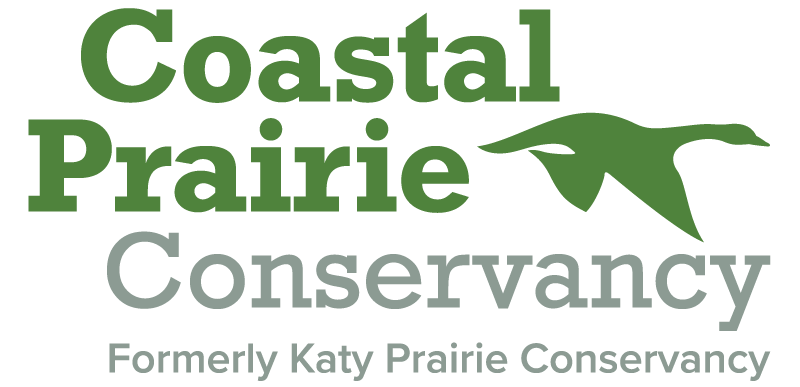Rooted in Conservation: The Vital Role of Milkweed for Monarchs
by Mallory Sanchez
Monarch caterpillar on butterfly milkweed.
Introduction
Milkweed (Asclepias spp.) is a vital plant for pollinators and many other wildlife species. One of the most iconic species that depends on milkweed is the monarch butterfly. Milkweed is the only host plant where monarchs lay their eggs, and its leaves provide the essential food for their caterpillars. The availability of milkweed is crucial to the survival of these beautiful butterflies.
Efforts at the Conservancy
Monarch butterfly flying near milkweed.
The Coastal Prairie Conservancy is taking significant steps to protect and restore milkweed habitats. One of the Stewardship and Outreach Specialists, Sarah Ranger, who goes by Ranger, shared that the preserves managed by the Conservancy naturally support monarchs by maintaining native milkweeds. "This year, we received a two-year grant from the National Fish and Wildlife Foundation to plant 20,000 milkweed seedlings by April 2026," she says. These seedlings will be planted on properties where they will be safeguarded from urban development.
The Conservancy organizes milkweed planting days and monthly stewardship events to involve the community. "We advertise open planting days through our website and social media," Ranger explains. "We've also partnered with corporate groups, schools, and scout troops to help us plant. It's a great way to get the community involved."
The Conservancy also plants buffer strips of wildflowers near milkweed sites. "These strips provide extra nectar for pollinators," Ranger notes, "and help attract monarchs to the area."
Challenges in Conservation
Snapshot of migrating monarch butterflies.
Restoring milkweed involves obstacles such as low seed germination rates, roadside mowing, and weather conditions. "Our nursery manager often has to reseed trays multiple times," Ranger shares, "and this year's drought made planting days difficult—sometimes the soil was too hard to even dig small holes."
The Conservancy also educates the public about avoiding tropical milkweed (Asclepias curassavica). These non-native species can harm monarchs when planted in temperate areas. This milkweed species can harbor a parasite of monarch butterflies called Ophryocystis elektroscirrha. Because of its long blooming time, this species can also cause issues with monarch breeding and migration schedules. To find out what native milkweed species grow in your area, check out these regional guides by the Xerces Society.
Protecting Land for Monarchs
Land conservation plays a crucial role in milkweed restoration. The Conservancy works with private landowners to establish conservation easements, ensuring vital habitats remain protected. "Easements provide a way to conserve land without stretching our resources too thin," Ranger explains. "We know the land is safe forever, and it's maintained by the landowners themselves." Learn more about conservation easements here.
Hope for the Future
There's hope for monarch butterflies by planting native milkweed, creating pollinator-friendly spaces, and protecting critical habitats. If we all work together, these iconic insects can continue to inspire future generations.
For more information and ways to get involved, visit the Coastal Prairie Conservancy website.
Sources
Native milkweeds. Xerces Society. (n.d.). https://xerces.org/milkweed
Wheeler, J. (2019a, April 19). Tropical milkweed-a no-grow. Xerces Society. https://www.xerces.org/blog/tropical-milkweed-a-no-grow
Recommended Reading
The Monarch Effect: Surviving Poison, Predators, and People by Dana L. Church
The Monarch Butterfly Migration: Its Rise and Fall by Monika Maeckle
Native Host Plants for Texas Butterflies by Jim Weber, Lynne M. Weber and Roland H. Wauer



